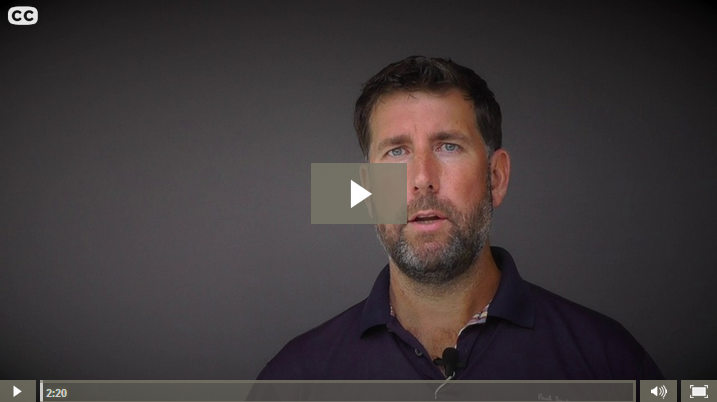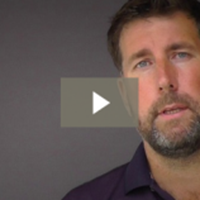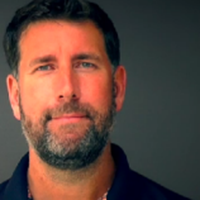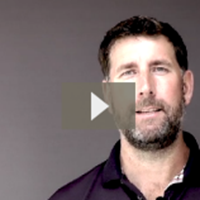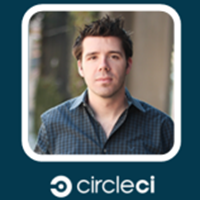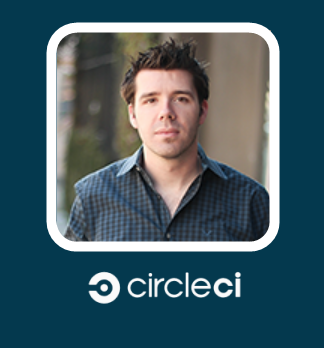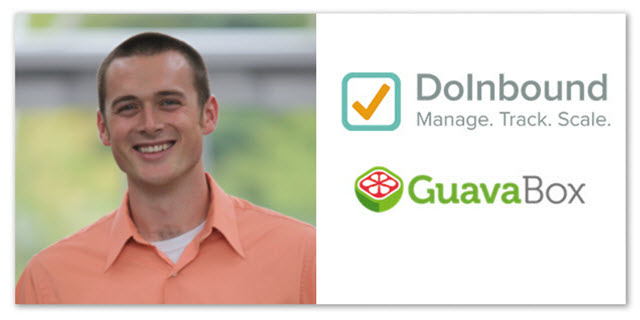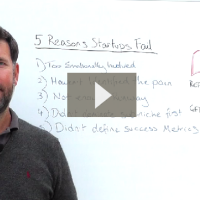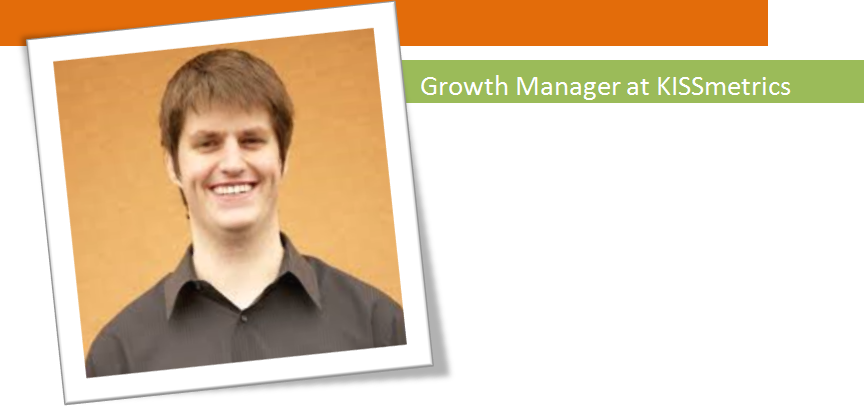
Lars Lofgren is the Growth Manager at KISSmetrics. His primary focus is to increase business by getting people in the door. This means that a large part of what he does is testing to figure out what works and what does not. He is responsible for leads, conversions, and optimization. Most recently, his strategies have resulted in doubling conversation rates of visitors to the homepage.
Podcast: Play in new window | Download
Tweetables
Today's Podcast Highlights
[4.01 - KISSmetrics is an analytics tool that tells you exactly who is doing what on your site.]
[6.52 - You can’t look at growth as just a project. You've got to look at it as a 24/7 process, something you’re constantly doing.]
[7.11 - Some tests run poorly, some you will get a moderate win, and then every once in awhile, but rare you will have a big win.]
[8.02 - Take your core assets and run tests on them back to back around the clock nonstop. It is a quantity game.]
[8.41 - You want to do a lot of customer research, make sure you’re really going after the big wins as much as possible.]
[9.13 - Don't bet on just one test, odds are it's not going anywhere. The big wins often make sense afterwards rather than at the time you are running them.]
[9.52 - Most of the tests we run are single variable tests like changing copy or a call to action.]
[10.20 - The important thing is to always be running tests and if you have the resources to run bigger ones then do so.]
[11.27 - What you really need is a growth team that’s completely self-sufficient.]
[12.16 - You need a data scientist that can actually run the analysis.]
[13.21 - Typical methods for AB testing and analyzing the data, most of them are pretty flawed.]
[14.48 - We ended up doubling the conversion rate on our homepage into free-trial signups which is pretty great.]
[15.26 - Making it really easy to sign up and taking your signup form and basically sticking it right in the middle of the page, that always helps.]
[16.58 - Our engineers spent some time reconfiguring our signup process so that if you authenticate with Google then it’s much easier to sign up with KISSmetrics at the same time.]
[19.13 - The problem, with video tests is that you're never really sure is it just the video or is it because you have a terrible video.]
[20.26 - Gif-o-graphics are really hot right now.]
[23.32 - A good hack to start with is to give people a checklist. So when they create an account there is going to be things that they'd have to set up every time.]
[24.42 - Transactional emails are really important.]
[27.11 - If you don’t have the margins to support a sales team, so you end up having to automate everything out of necessity.]
[28.14 - Most healthy SaaS businesses like larger ones that are growing very well typically have two to maybe three year customer lifecycles.]
[29.54 - Most of our analysis and tracking happens at the channel level.]
[30.40 - The single, most important variable when it comes to driving traffic is just volume.]
[32.31 - The problem with churn is it’s really a lagging indicator right.]
[33.17 - Looked to see if there was a correlation on our end between logins and lifetime value or monthly recurring revenue and there wasn’t.]
[34.21 - In most cases, logins, I wouldn’t expect them to be very valuable.]
[36.24 - Really worked to ask if people wanted a product demo on their webinar registration form.]
Disruptware is building the largest community of software entrepreneurs on the planet. Make sure you are on the list.


Full Transcript
Paul: Hi there software entrepreneurs and welcome to the Disruptware Podcast. This is the show for entrepreneurs who are either just starting out or those who already have a software company and are looking for techniques and ideas for massively scaling their business. The way we do that is to interview experts in the market who are already running their software company. Whatever level they are at, they have great content to share. We dig deep to get factual experiences that you can put into action right now. Today, I want to introduce you to Lars Lofgren who’s the growth manager for KISSmetrics.
Now Lars is purely responsible for all the numbers on getting people through the front door. So everything in terms of optimization, conversions, the number of leads and all the metrics around that from the marketing team. Recently, since November what he’s done is implemented a new strategy after testing lots of different combinations and he’s over doubled the conversion rate for visitors to the homepage. You know what Lars agreed to do to come on the show and spill the beans about this whole strategy. How he put it together and how he’s actually implemented everything since that and over that period time. Let’s get Lars on the show.
Lars: Yes, great to be here. Thanks for inviting me.
Paul: Yeah, I really appreciate you taking the time out of your day. I know that obviously, you work for KISSmetrics and you’re responsible for growth and you must have a ton of stuff to do today.
Lars: Yes, always.
Paul: As I mentioned, we’re really excited about having you on the show because our audience are software entrepreneurs who are either starting up their own software business mainly in SaaS or they’re really looking to scale. What’s really interesting about your business is you’ve really started to scale. I had a chat with Neil Patel the other day, you’re well into the thousands of customers, you got great growth rate, you got some great marketing strategies especially with content marketing but your job as Growth Manager, is to really look at that from the numbers perspective. It would be really interesting for us to share some of your tactics and things like that around that.
Lars: Yeah, absolutely, I’m happy to go into detail on all of it.
Paul: Brilliant. Before we get down to the nuts and bolts, just tell me a bit about yourself. How long have you been at KISSmetrics and where were you before that?
Lars: Yeah. I’ve been at KISSmetrics almost two years now. When I originally started, I was actually on as a contractor and I was working on basically just like blog posts turned some support articles into videos then I started doing a bunch of webinars. Now, I’m pretty much right in the heat and thick of it all especially on the marketing team. These days, I get to focus mainly on is our monthly leads, is our monthly lead count growing, the leads that we pass on to our sales team. How are conversion rates doing, are they improving over time running our AB tests.
Also, making sure that we’re managing our internal data well. We have good insight into what’s moving the business and tracking everything. Then also building out the marketing infrastructure so that the marketing team can really scale what it’s doing.
Paul: I was just going to say for the benefit of others also, maybe just tell others what KISSmetrics is. I’ve used it before but, how do you position yourself to other people?
Lars: Yeah, the best way to explain KISSmetrics is it’s an analytics tool, the biggest difference in between all the other tools in the space, Google Analytics, all the other guys out there, they’re really focused on what’s happening. You know your page views, events that are triggering visits, all that type of stuff. But KISSmetrics really takes it a step further and ties all that data to real people. KISSmetrics tells you who’s actually doing it. So whenever you’re running reports whether it’s a funnel or cohort tracking a metric of yours, whatever, you can always go in and say okay, give me a list of people that fall into this group so I know exactly who’s doing what. All of your data is constantly getting tied back to real people.
Paul: With real people, you can actually tie that down to email addresses and accounts, right?
Lars: Yup.
Paul: You can actually trace back the acquisition path from a customer to how they got into your funnels as a lead, right?
Lars: Yup, you can see the first traffic source that brought that person to your website. You can see everything they did along the way, all the features that they’ve used, everything they have purchased, all the plans they’ve been on. If you’re recording people’s emails and you can get a list of people that meet any set of criteria that you want and then you know, it’s very easy to know what types of customers you actually have, what their overall behaviors are and then you can always reach out to them, right because you got emails right there in the tool.
Paul: Yeah, that’s brilliant. Your target market, I know SaaS companies is obviously one because you know SaaS companies are always looking at you know the - obviously not just customer acquisition, but their LTV and their churn and everything, is there any other companies that you’re looking or any other segments that you’re targeting?
Lars: Yeah, the two types of customers that we found KISSmetrics really provides a lot of value for is SaaS, like you said and then also e-commerce companies. Basically, any companies that have customers that are doing a lot of activity online, purchasing online repeatedly and you add that. The majority of that customer lifecycle is online, that’s our sweet spot.
Paul: Okay, brilliant. What would be great, I think, is if you can give us some strategies for growth. What are you doing right now? What’s working? What have you tested that isn’t really working?
Lars: There’s two ways to approach this, one is the strategy level and one is tactics. At the strategy level, I don’t even really, I don’t get too concerned about what we’re actually testing. The reason I don’t get that concerned about the actual test is that really, when you look at growth programs and if you really are committed to long-term growth, consistently and predictably over time you can’t look at growth as just a project. You've got to look at it as a 24/7 process, something you’re constantly doing. And the reason you need to turn it into a 24/7 process is because any of your tests, there’s a bunch.
Some tests will perform really poorly. Most of them are actually a wash like the test that you launched doesn’t matter. It makes no difference either way, pick a version, it doesn’t matter. Every once in a while, you get a moderate win, maybe a 10 to 30 percent increase in the conversion rate. And then even rarer, out of every once in a while, you can get a big win, you might be able to double a conversion rate or increase it by 50% or more something like that. They’re definitely rare. They don’t happen that often. If you’re going to increase conversion rates consistently, you need to spend a lot of time really ironing out the process and the resources and the team at your company so that you have the people that are dedicated to running AB tests around the clock.
Typically, I give a couple of recommendations to people. One is to take your core assets so whatever marketing pieces of your company that are getting the most traffic like your homepage, a features page, a few key-landing pages, for us it’s also our blog and webinar landing pages. Whatever it may be, whatever you’re constantly using to convert people. You want tests running on those pages back to back around the clock non-stop. If you do that, AB tests really comes down to a quantity game. How many test can you actually run?
Yeah, you want to do a lot of customer research, make sure you’re really going after the big wins as much as possible and you’re making informed tests instead of just testing random things. But at the end of the day, you need to make sure that you have that process set up in your company so you can run as many of these things as you possibly can because that’s, if you play that process, then you’re able to find enough of those moderate and big wins that they really stack up over a 90-day period or especially over a year.
If you bet your company or your marketing team on any one test, odds are that test isn’t going to go anywhere, our big winners, they make sense afterwards but at the time, we’re never really sure what’s going to pan out.
Paul: To recap that then, you’re kind of doing lots of small tests, almost doing things incrementally, making small changes rather than putting your money on big changes?
Lars: We rotate between the two. I do either one or the other depending on, actually just a number of things. Usually, most of the tests are just single-variable tests like we might just change the copy and a call-to-action button or maybe it is just the layout or just the design. One element at a time in order to really isolate the variables that are moving the needle. Every once in a while, we feel we’re stagnating a little bit, we might step back and do a complete revamp and say, okay, if we were to completely redesign this flow, everything top to bottom, what would that look like?
We do, do bigger tests. Sometimes they work really well, sometimes they don’t but regardless of whether or not you're doing little tests or big tests. The important thing is to make sure you always have a test running. And if you have the resources to do bigger tests in that kind of cadence - awesome, go for it. Make sure you’re always running them.
Paul: Okay. I guess, you’ve got a team there, right, people who are doing that, what does that structure look like?
Lars: Right now the growth team at KISSmetrics is split up a little bit. We’ve had to move resources around. I work with a couple of our engineers, which are kind of on our product team and then we have a designer on our marketing team that I also work closely with, as well as, kind of a data scientist. We don’t really have a formal whole team at the moment. I get to bounce around a little bit. What we’re trying to build …
Paul: What’s the ideal?
Lars: An ideal structure, the ideal structure is you want a growth team that has everything in-house, right?
Paul: o.k.
Lars: You don’t want a growth team that’s doing what I’m doing right now and going to all sorts of different people and begging for resources. What you really need is a growth team that’s completely self-sufficient, that doesn’t have to barter with anybody else or beg them to help out and work on their projects. What that means is in order, especially in kind of an online environment, you end up needing a few core skill sets on that growth team. One is you need a project manager, a product manager type that has, that’s really interested in marketing or has a marketing background and knows what to test, what kind of things you know have potential to move the needle and that type of thing.
Then you need probably a designer with some decent front end skills. And you need a back end guy that can - basically just a full-stack engineer that can touch any part of your product there’s no limitations. Lastly, you’ll need a data scientist that can actually run the analysis. When you get a little bigger and you have enough data volume, you’re going to do a lot of in-depth statistical analysis on all of your internal data to actually help you move in the right direction. That stuff gets complicated really fast. You want someone that’s really comfortable with it.
Paul: You know what? I think that’s one of the challenges that a lot of people have. From the marketing side, we’re always taught to test everything, right?
Lars: Mm-hmm.
Paul: Even just your basic website, no matter what you’re selling, you should always split test. But I find the challenge, even though you got great tools now like Visual Website Optimizer or Optimizely, it’s really taking all that data and knowing how to analyze it. Especially when you get to more complex operation like yourself, that’s where you really need, as you call them, the data scientists to dig, drill and as you take all that data make sense of it.
Lars: It’s actually kind of funny. The typical methods for AB testing and analyzing the data, most of them are pretty flawed. The way that most people approach them these days isn’t that great. You have to, to actually do it right and to run through controlled experiments and to get solid data on that type of stuff. You end up having to get into Bayesian statistics, which most people aren’t. Most people don’t even know what that is let alone know how to use it. To be honest, I don’t even know how to use it. I just know kind of at the high level, how it works and how we’re using it.
But we got really lucky and found a great data scientist that loves this stuff and is helping us to take it to the next level. I can’t, I don’t have enough good things to say about great people that love stats and love data analysis, who can dive into all this stuff.
Paul: Yeah, I’ve noticed a lot more jobs appearing, anyway …
Lars: Yes, it's getting popular.
Paul: … for people like that. You just need the really good sort of math brain. You need to love the numbers to be able to drill that. Sadly, I’m not one of those guys but at least I can recognize that, right?
Lars: Yeah.
Paul: That’s the key. That’s the strategic perspective. Then you were going to come in to some more tactical things that people can do and try out.
Lars: Yeah so in the last, let's see - we started in November. So that’s like four months now, four or five months now. And in the space of about four months, we ended up doubling the conversion rate on our homepage into free-trial signups which is pretty great. That’s a lot more leads that we have to work with now. We used that same strategy, just relentless back-to-back AB tests. We tested all sorts of stuff. We originally had a little slideshow on our homepage, we tried removing that. That actually didn’t make a difference either way. We had a sidebar signup form on our homepage, we stripped that out and just put it in the center of the page, that actually gave us a decent win. That was like 20 or 30 percent.
So just putting, making it really easy to sign up and taking your signup form and basically sticking it right in the middle of the page, that always helps. The big win that we really got is actually a combination of two things. We completely redesigned our homepage. This is one of those big tests I was talking about where you just rethink the whole thing top to bottom. So we did two main things. One, we stripped off everything on our homepage just to the bare essentials. For the most part, it’s what is our current homepage.
The primary headline, a small bit of copy, call-to-action button, a photo of a guy that’s looking at the headline and then some links at the bottom, a sign in button in the top right and that’s it, really minimalist homepage. Minimalist homepages has been a reliable win for us for a really long time. We’ve tested other ones in the past and they always do great. If you’re looking for a nice, quick, easy win, just strip everything else off your homepage and just give people a single call to action.
Paul: You know what? Looking at that, I’ve noticed the difference and there’s not a lot that people need to do when they hit that page, right?
Lars: Yup.
Paul: Because you’ve got your differentiators straight away, what Google Analytics is and why KISSmetrics is different. The other thing I’ve noticed, is you've got the sign in with Google button.
Lars: Yeah, and that’s the second thing that we launched at the same time. Basically, we, our engineers spent some time reconfiguring our signup process so that if you authenticate with Google then it’s much easier to sign up with KISSmetrics at the same time. We kind of cut of some of the steps. We tested it against our normal signup flow a couple of times and a couple of different ways and the Google signup flow has worked very well for us. That, in combination with the minimalist homepage, actually more than doubled our conversion rate.
Paul: Right, that’s amazing. That’s a really good strategy. If you use one of the big imagery as well, especially with someone looking at an opt, a signup or from the marketing world an optin always used to work really, really well. Because you know you follow the eyes of the person who is looking.
Lars: People always talk about that. Actually, I’d like to run a test maybe I'll do it in the next couple of weeks. Where actually we would replace the image. Maybe we can get an image of the same guy and have him looking somewhere else and see if it actually makes a difference. Because you see these experiments everywhere and like these best practices and user cases and all this crap. And ninety percent of them don’t make a difference. Actually, probably more than that, the vast majority of them don’t move the needle at all. There’s a few that really do. You have to wade through all of them to figure out which ones actually matter.
Paul: Just going off on a bit of a tangent here, but there’s something that I really want to test. And that is, I don’t know if you have ever used a video lead capture page. LeadPages, I don't know if you have come across that tool, LeadPages by Clay Collins. It’s a fantastic lead capture tool. He’s got, one of his templates is a video optin template. You can actually have a little bit of video running behind the optin. So I'm like really keen to almost have like someone being videoed walking around with a big cutout saying optin with an arrow pointing to the optin screen. Do you know what I mean? It’s almost like the film blends into what you actually want the user to do.
Lars: Yeah, actually a lot of people talk about using videos in a number of different ways. We’ve done, we’ve tested video in the past and it didn’t work that well for us. The problem, with tests like that, you're never really sure is it just the video or is it because you have a terrible video. Is it execution or is it just that the idea is fundamentally flawed. The big problem with video is, or at least the big barrier that we’ve always hit is the fact that videos are not cheap - especially good ones. You have to have a copywriter that really knows what they’re doing to write the script.
Then you have to have, you got to bring some video guys on board that can either do the animation or shoot the video or whatever it is to actually give it the attention. To give the test the love that it deserves to do a valid test. That expense means that it’s not just a quick and dirty test you can do real fast. It’s much more. You really have to commit to it. That’s why we haven’t done as much stuff on it. I’d actually really like to do more testing with gifs. Maybe on the homepage to test animations like a gif infographics. They’re getting really hot right now. Everybody wants gifs. Maybe we can find a way to actually use them and of course they’re not nearly as expensive as full videos.
Paul: Yeah. I think, funny enough, when Neil was presenting at the Traffic Conversions Summit, he was talking about, he called them gif-o-graphics, which is going to be a big one.
Lars: Yeah, they’re doing really well for him. He has posted a few of them on Quick Sprout and they just get like gobs of traffic supposedly. Maybe we can use a few of them to actually increase conversions instead of just driving traffic.
Paul: Brilliant. Okay, so just to recap so we got your sort of high level strategy, what your ideal team would look like and we started looking at some you know more tactical things that you’ve done on the homepage which has basically doubled your conversion rate, your signup rate for your free trials, since you started this, what, November, you said, I think it was, was it?
Lars: Yep.
Paul: What about you know, how do you then take that a step further because the other end of growth is you got customer acquisition or the trial acquisition and then you’ve got converting those trials into a paying customer and then you got the back end which is obviously reducing churn. How do you tackle those two elements?
Lars: Basically, you do it in pretty much the same way. That’s why you really need a growth team that can touch the entire product so there’s no limitation like this. For me to run a test in the product, I actually got to get a lot of buy in from the rest of the team and other people instead of, if you have an entire team dedicated to growth then you can just dive in and there’s, you can go anywhere you want and really tackle the signup flow, the onboarding process, you can go after upsells or you could launch churn reduction type AB tests things like that.
That’s the main point of the growth team. In fact growth teams as a whole, they got started in social with Facebook and Twitter and Quora and all those guys. For them, their marketing is the product. Their marketing team is very engineering focused, they’re digging their hands in every part of their product in order to find ways to grow the user base. Now, we’re B2B SaaS and we have a sales team, so things get a little bit more complicated, you know we’re passing leads onto sales, they’re turning them into paid customers. But we still have a lot of product tests I would love to be running. The main limitation is can you get the resources and the team together so you can dive in to all that stuff?
Paul: Cool. Is there anything that you can share or tips or strategies to get that trial customer into a paying customer?
Lars: A good one, there’s a few, a good hack to start with is to give people a checklist. So when they create an account there is going to be things that they'd have to set up every time even if it’s just filling out some forms. Always give people a step-by-step checklist of hey, you have a new account, that’s great, here’s where to start and here’s the four things that you have to do. That checklist, the key that you really want to think about here is what we call activation. A user activates when they finally see what the core value of your product is. Basically, what you’ve been promising them the entire time.
It’s using basically the core feature of your product, right? If users don’t get to that activation step, they are never going to want to pay for it. They haven't seen the value. It’s the entire point of the free trial. So a big hurdle that a lot of people struggle with is not just getting people into the trials but after they do get in trial, how do we make sure they’re actually using the product. You can use that checklist to grease the wheels a little bit and push people in the right direction.
Transactional emails are really important. Automating those emails, you can do a full marketing automation tool if you’re big enough or use something like Intercom, I think dot IO. They do trigger emails based on events or what people are using. Get people to come back into the product. Give them subtle reminders of hey, you still need to set this up. Hey, have you used this over here. Go check this out. Things like that.
Paul: One thing, I’ve used your product. I’ve used the competitor’s product too and there’s one thing very smart that you guys do. That is with your inside sales team. I don’t know if you call them inside sales.
Lars: Yeah, it’s an inside sales team.
Paul: That’s what I used to call them. Your inside sales guys came straight to me like literally the day or two after, offered me the one-to-one demo to get me through the onboarding process. As you said, getting the customers to the activation stage is quite tricky when they've signed up to something free. If they paid something then it’s slightly different because they got a different mindset so they are more likely to invest more. But getting something for free, they are less likely to invest unless the experience is really emotive and having your inside sales doing the one-on-one demo, almost dragging you through to get to that activation point, I think is really, really key.
I don’t know if you know this but one of your competitors, the way they do it is they do it more of a group webinar type thing. So it’s less of a touch.
Lars: Yeah, I’ve seen that. It really just, it comes down to whether or not you’re going to build out a sales team at your company, if that’s part of the vision. The main, how expensive is or what is your average contract or annual contract value for your customer at your company. What are your margins? Can your margins actually support a sales team to do stuff like that? What you typically see is at the bottom of any market in kind of the 20 to maybe 150 dollars per month range maybe a couple of dollars a month.
You really just don’t have the margins to support a sales teams, so you end up having to automate everything out of necessity. We’re going for the mid-market analytics area so sales is going to be part of our DNA. I work very closely with them to help manage that process, automate it as much as possible and get in touch with people like you that are trying out KISSmetrics and help them as much as possible.
Paul: Right. I guess, just taking a step back, so your point is because of the pricing model you’re at where you’re talking to the mid to high-level enterprise then that makes your inside sales an affordable proposition. The other thing is with the analytics tool itself, it’s a long-term game, right?
Lars: It is.
Paul: Your LTV must be quite good simply because once a customers up and running, all the data's within your platform so that they’re more likely to stay for a very, very long time, right?
Lars: Yeah. That’s the goal. It’s not just like, most healthy SaaS businesses like larger ones that are growing very well typically have two to maybe three year customer lifecycles on average which is pretty long on the lower end. And so either way we’re trying to get customers for a really long time and analytics, definitely the longer you use it, the more value you get out of it. On top of that, analytics is, we all need it, we need to measure what we’re doing in order to see what’s working or what’s not. At the end of the day, analytics is still as an industry not that straight forward.
We've got a lot of ideas to help move in that direction but inherently it’s still a complicated product. It takes implementation time. You got to commit to it in order to do it right. Any help that we can give customers along that way is great.
Paul: Absolutely. Just one thing, I know a core part of your strategy is content marketing. We talked about gif-o-graphics and I follow Neil's blog and it's really, really good stuff. When you’re tracking how successful a certain piece of content is, do you, in your analytics that’s coming into your website, do you try and measure the success of every piece of content that you put out or you really just tracking the channels that they’re going out to? So if something is coming from Neil’s blog or something coming from a news post or something like that?
Lars: Most of our analysis and tracking happens at the channel level. I hate telling people this because it goes against my personal preference for doing things, I really love quality over quantity. In most cases, that’s the game I like to play is quality. How can we give better content? How can we, even if it means less content, how can we really blow it out of the park? In everything that we’ve done, I mean growing the KISSmetric’s blog and Neil, he’s world class at driving traffic, helped TechCrunch and all sorts of people. I think he has three blogs now that are all over 100,000 visits a month which is just crazy, right?
Paul: Mmm, yeah.
Lars: The single, most important variable when it comes to driving traffic is just volume. You need to maintain a decent level of quality. Once you have that kind of benchmark, if you’re trying to make tradeoffs between quality versus quantity, play the quantity game. It’s the same way with the other pieces of the content, PDF’s, webinars whatever it may be. When it comes to just growing it consistently over time, you need to figure out how to do it every single day or every single week.
Paul: Right. That’s really cool. Coming back to the customer side...one thing we didn’t finish on really is the back end of the process in terms of retention and reducing churn. Are there any strategies or tips that you use to monitor that and try and predict if a customer is going to churn and see how you can recapture them?
Lars: We've, the data scientist that I keep mentioning, a couple of weeks ago he spent some time and actually built a few algorithms to predict which of our customers were going to churn. Now, at the beginning of every month, we pull a list of about 50 people that we consider high risk. We’re testing a couple different strategies at the moment to see, can we get them back reliably. Before, we were actually waiting until people churned and then we had a customer service rep that was basically full time just trying to get them back. But obviously, doing that after the fact is never as easy as doing it before.
We’re re-evaluating that process and basically trying to get ahead of it right now. We’re just still in motion. The problem with churn is it’s really a lagging indicator right. In any projects that you do against it will take a couple of months for them to really flush out and see whether or not it worked but hopefully, hopefully we’ll hit on something.
Paul: I guess you’re trying to get your baseline for, let’s look at simplistic level like the number of logins per month for a customer. You probably got an average. When customers start dropping below that then that could raise a flag, right?
Lars: We did our cancellation analysis on, we looked at a couple of different variables, logins might have been one of them. It was kind of funny that you mentioned logins because we also spent some time just looking and to see if there was a correlation on our end between logins and lifetime value or monthly recurring revenue and there wasn’t …
Paul: Really?
Lars: It doesn’t correlate at all. Yeah, which is really funny. If someone on our product team came out with a feature or something that really or myself tried to come out with a project to spike customer logins, I wouldn’t expect it to increase revenue at all or reduce cancellations in the long term. Which is funny! Engagement is actually a little trickier of a beast to really crack. You really got to dive into your data and figure out what a healthy customer looks like and it’s going to be different for every company.
Paul: Yeah, because obviously that’s the first thing I would have thought of. You just expect for that to follow through wouldn’t you?
Lars: Yeah, everybody looks at logins, like monthly inactive user means they logged in once this month. That might be a healthy user, it might not. You have to, you got to get a lot of your own data together. You got to really have enough of a sample size to do this kind of analysis with the regressions and so forth. In most cases, logins, I wouldn’t expect them to be very valuable.
Paul: Right okay, good. So in terms of other things you’re focusing on this year, can you give us some insight into that?
Lars: Yes, the big ones are, as a team we’re really focused, we spent a lot of time improving our back end infrastructure. As you can imagine, analytics products, there’s a lot of data moving around, when you start to grow it and scale it, the infrastructure becomes a bit testy and crazy. We spent a lot of time making sure it’s rock solid. That was really a main focus of last year. This year we’ve already started moving back into the front end of the product. And really, cause for awhile in the analytics space, we were definitely on the cutting edge.
We did funnels, that kind of step-by-step view before anybody else was doing them. Our cohorts were the first in the space. We want to get back to that point where we’re pushing the boundaries of analytics and where these tools could go. We’ve already started going back in that direction. We just refreshed our entire UI. We’ve got some more new reports in the works. I don’t want to talk about it in case for whatever reason, they don’t end up panning out. We’re really focused on the product. Marketing, we have two goals, increased leads and increased traffic. That’s what we’re primarily focused on.
Paul: Pretty straight forward, right?
Lars: Yup.
Paul: If only it was that easy.
Lars: I wish it was as easy to implement as it is to talk about.
Paul: Exactly. Great. Any other tips or growth hacks I guess in general or things that you’ve read that are your favorite, growth hack strategies that you could recommend or point people to?
Lars: This is a unique one for people that do have inside sales teams and are just trying to get demos. We, I’ve done so many webinars at this point. I did like 30 some webinars and we tested every method in the book to convert webinar registrations and attendees into demos and leads. Most of, just about everything failed or wasn’t working enough for it to actually matter. And the one thing that really worked for us is during the webinar registration simply asking people, hey, do you want a demo?
When people say, yes, passing it on to the sales team, people say no. No worries, they go right into the registration. That has worked really, really well for us. It’s based, that one little question at the bottom of our webinar registrations have allowed us to actually scale webinars.
Paul: Right, that’s cool. Do you do webinars every week or do you basically send people to that and have a regular schedule?
Lars: Yeah, we’re doing them weekly, right now. Most weeks, we’re launching a new webinar.
Paul: I guess you’re trying to convert them at the back end of the webinar or are you just leaving it open?
Lars: That’s the thing is, that’s where we started testing because if you go to any of those webinar trainings or read any of the books or best practices, everybody tells you spend 40 minutes delivering great content, really selling benefits, value and all that stuff and then roll right into your sales process. People give you all sorts of different tactics for how to manage that transition for the last 20 minutes or 15 minutes whatever it is at the end of the webinar. We tested a bunch of stuff. It kind of works, the problem is you have your email list and then a huge portion in the email list doesn’t open the webinar announcement. Then a smaller percentage actually clicks through to the landing page.
Then even a smaller cut actually signs up and registers, then a smaller cut actually attends and even a smaller cut is there at the end of the webinar. By the time you get all the way to the end and you have your lead and for us that’s not even the end of the sales process. That can work if you’re selling stuff directly at the webinar. But for us we have a sales team, they’re just a qualified lead at that point we got to pass them on to our sales reps, goes through their qualification process, get people sold, close them, all that stuff.
When you look at that entire funnel by the time you get through all those steps, you don’t really have much to work with. It would actually work a lot better for us by moving that demo request essentially up a step. Instead of asking people for demos during the webinars, we ask them during the registrations. We have a much bigger pool of people to work with. Then that’s where it actually started to make sense for us. We can actually generate a decent number of leads reliably, add volume and enough of them where it actually...cause you webinars are ton of work, so much work. If you don’t generate enough leads then it’s a huge sinkhole on just time and cost. That actually is the thing that made them work for us.
Paul: Got it. Great. All right Lars, we’re coming to the end of our chat. Again, I really appreciate you coming on and sharing some of these strategies and tips for everyone. What would you recommend other people read up on, any particular blogs or books or anything that can give them some additional help or guidance into growth for their business?
Lars: Yeah, for SaaS there's a couple of blogs I always recommend. Jason Cohen who is now, I think the CTO of WP Engine, Asmartbear.com, he always writes great stuff. I think Jason Lemkin maybe was the CEO and founder of EchoSign sold to Adobe. He has a blog called SaaSTR.com or SaaSter, something like that. Let’s see, who else? David Skok who’s like a VC in the SaaS space, I think he’s involved with HubSpot maybe, he talks about HubSpot a lot. He has a blog I think it's called forentrepreneurs.com.
Paul: Yeah, quite lovely.
Lars: Fantastic.
Paul: I love that stuff. Yeah. He’s been around a long time as well?
Lars: He really knows what he’s doing, in fact his SaaS metrics definitions list is pretty much the industry standard at this point. We even reference that when doing our own internal stuff. He’s kind of the, very, one of the main thought leaders. If you want to get really serious with attribution, data, modeling, that type of thing, check out Kevin Hillstrom, he has a blog called minethatdata.com, great stuff. He talks about things in ways that no other analyst does. He was a VP at Nordstrom. Worked at Lands’ End, all these other companies.
He got his start in like catalogues, analytics and measurements and analysis. He does a lot of work that is very applicable to e-commerce but even for a SaaS company. It’s still, the fundamental concepts he talks about are still very relevant.
Paul: Fantastic. Brilliant. All right, Lars, again, I really appreciate you coming on the show. For anyone listening go to KISSmetrics.com. Sign up, it’s a great analytics tool. Again, it’s about looking at the people in your analytics not just the data. Definitely a very, very good tool to use. Thanks again, Lars and thanks again for coming on the show. I really appreciate it.
Lars: Yeah sure thing. It’s been a real pleasure.
Paul: If you enjoyed the show, you can get the show notes from Disruptware.com and if you are not a subscriber and you’re listening to this in the iTunes Store then please visit Disruptware.com and sign up. That’s it for this episode. Look out for next week’s show. I’m Paul Clifford and thanks for listening.
Recommended Resources:
1. KISSmetrics - click here
2. Visual Website Optimizer - click here
3. Optimizely - click here
4. LeadPages - click here
5. Intercom - click here
6. TechCrunch - click here
7. Jason Cohen Blog - asmartbear.com
8. Jason Lemkin - SaaSTR.com
9. David Skok - forentrepreneurs.com
10. Kevin Hillstron - minethatdata.com
